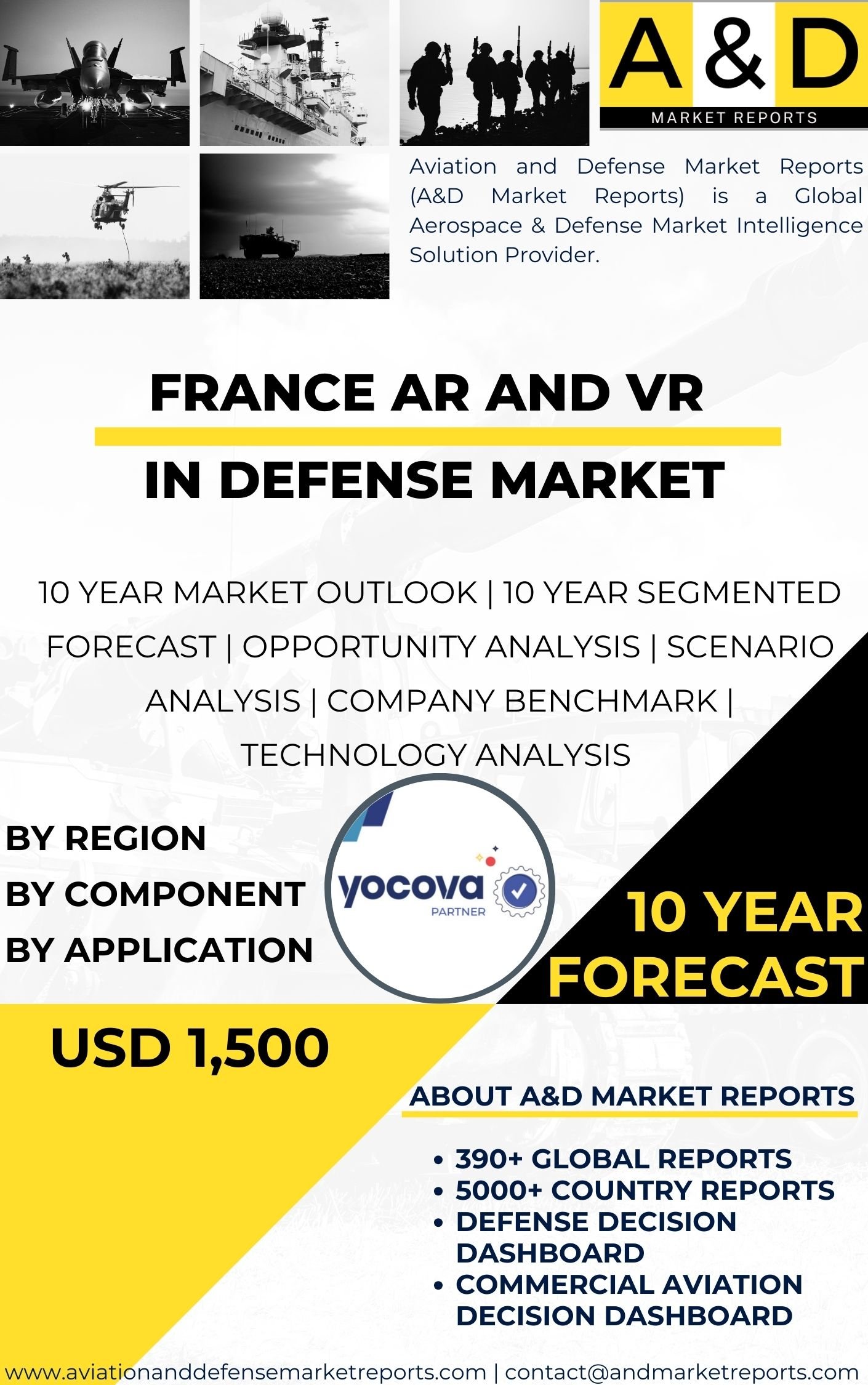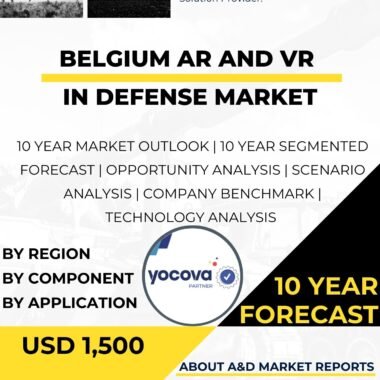Description
France AR & VR in Defense Market
The France AR & VR in Defense Market is a critical and rapidly growing segment in France’s defense industry. AR and VR technologies are revolutionizing the way military personnel train, plan, and execute missions, providing enhanced situational awareness, training simulations, and mission planning capabilities. As a significant player in the global defense market, France has been actively adopting and developing AR and VR solutions to enhance its defense capabilities and maintain its position as a technologically advanced military power. This essay provides an overview of France’s AR and VR in defense market, focusing on its significance, key players, technology advancements, applications, international collaborations, policy considerations, and future prospects.
The significance of AR and VR technologies in France’s defense market lies in their potential to transform how military personnel engage with information and interact with their environments. AR overlays digital information onto the real-world view, providing soldiers with critical data, such as maps, enemy positions, and friendly forces’ locations, in real-time. VR immerses soldiers in virtual environments, allowing them to participate in realistic training simulations and rehearse complex missions in a risk-free setting.
Key players in France’s AR and VR in defense market include government entities, defense companies, and research institutions. The French Ministry of Armed Forces, through its procurement agency, the Direction G?n?rale de l’Armement (DGA), drives the adoption and development of AR and VR technologies for the country’s armed forces. Additionally, private defense companies like Thales, Dassault Syst?mes, and Nexter Systems have been instrumental in the research, development, and production of advanced AR and VR solutions for defense applications.
Technological advancements have been pivotal in shaping the growth of France’s AR and VR in defense market. Innovations in display technologies, sensors, and human-machine interfaces have significantly improved the accuracy, resolution, and comfort of AR and VR systems. Additionally, advances in Artificial Intelligence (AI) have enabled more sophisticated simulations and enhanced the capabilities of AR and VR applications in training and decision-making processes.
The applications of AR and VR in France’s defense market are diverse and critical in various domains. One of the primary applications is in military training and simulation. AR and VR technologies allow soldiers to engage in realistic combat scenarios, practice complex missions, and familiarize themselves with new equipment in a safe and controlled environment. This enhances their readiness and effectiveness on the battlefield.
Furthermore, AR and VR technologies are used in mission planning and execution. AR can provide commanders and soldiers with a real-time, heads-up display of mission-critical information, enhancing situational awareness and decision-making capabilities. VR-based simulations enable mission rehearsals and improve coordination among various units before actual deployments.
France’s AR and VR in defense market have also benefited from strategic international collaborations. The country has engaged in partnerships with other nations and defense industries to share technological expertise, collaborate on joint research and development programs, and facilitate the exchange of knowledge and resources. Such collaborations have strengthened France’s defense relationships and expanded the market reach for its AR and VR technologies.
Policy considerations play a significant role in shaping France’s AR and VR in defense market. The country adheres to international regulations and standards concerning the use of technology in military applications, data security, and privacy. Additionally, national policies prioritize the development and deployment of cutting-edge defense technologies to enhance the country’s defense capabilities.
Looking ahead, the future prospects of France’s AR and VR in defense market are promising. As the capabilities of AR and VR technologies continue to evolve, the demand for these solutions in defense applications will increase. The French government’s commitment to investing in innovation and adopting advanced technologies will drive the demand for AR and VR solutions in the military.
However, challenges remain for the market. One such challenge is the need for continuous research and development to stay ahead of evolving technologies and improve the performance of AR and VR systems. As adversaries adopt similar technologies, France must invest in cutting-edge research to maintain its position as a leader in the global defense market.
Moreover, ensuring cost-effectiveness and user-friendly interfaces are crucial to maximize the adoption of AR and VR technologies among military personnel. Streamlining development processes and optimizing system integration are essential to meet the demands of both domestic and international customers.
To address these challenges and seize opportunities, France’s AR and VR in defense market must focus on continuous innovation and collaboration. Emphasizing the integration of advanced sensors, AI, and human-machine interfaces will enable the production of more efficient and effective AR and VR solutions for military applications.
In conclusion, France’s AR and VR in defense market are crucial components of the country’s defense industry, providing enhanced training, mission planning, and decision-making capabilities for its armed forces. Key players, technology advancements, applications, international collaborations, policy considerations, and future prospects all contribute to the market’s significance. The future prospects of the market are promising, driven by the increasing demand for advanced AR and VR solutions to enhance defense capabilities and maintain France’s position as a technologically advanced military power. By maintaining its focus on innovation, quality, and international cooperation, France can continue to strengthen its position in the global AR and VR in defense market.




